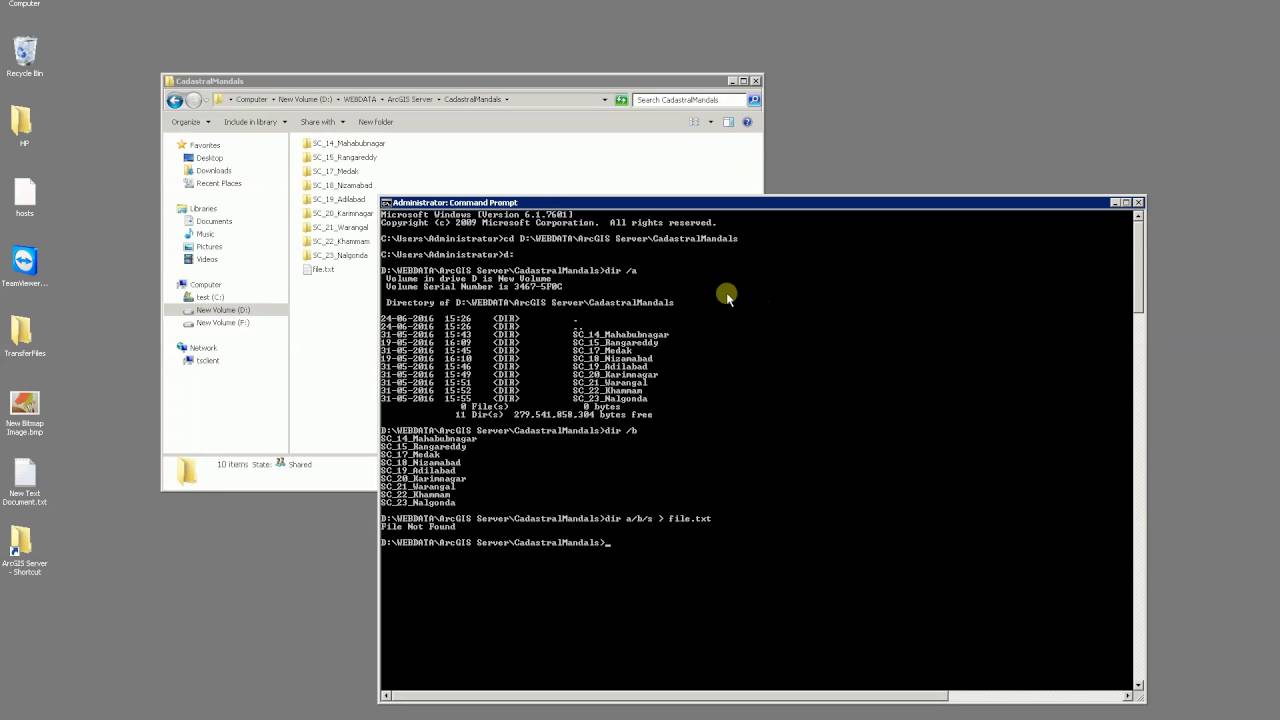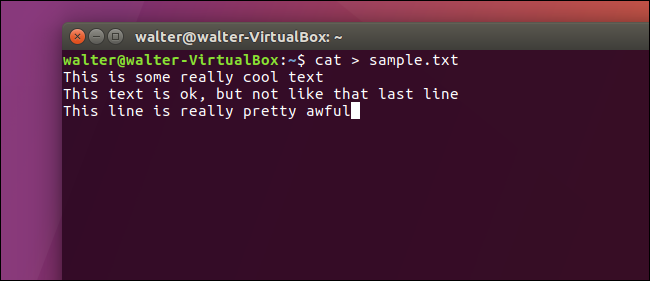The command prompt window. You can send the results of the ping or trace route command to a text file. Create a folder called pingresults in the C: directory. Create a text file listing only certain types of files Rather than listing all the files in a folder, you may desire a list of certain types such as pictures or music. The dir command allows the use of the wildcard symbol *, which adds very useful functionality.

Cmdlet New-Item cmdlet is used to create a text file and Set-Content cmdlet to put content into it. Step 1 In this example, we're creating a new text file named test.txt Type the following command in PowerShell ISE Console New-Item D: temp test test.txt You can see the test.txt created in D: temp test directory. Step 2 In this example, we're adding content to test.txt. Type the following command in PowerShell ISE Console Set-Content D: temp test test.txt 'Welcome to TutorialsPoint' Step 3 In this example, we're reading content of test.txt. Get-Content D: temp test test.txt Output You can see following output in PowerShell console. Welcome to TutorialsPoint.
Updated: by Computer Hope You can create a on your computer with a. An example of a text editor is, which is included with. Note: When we refer to a 'text file' we are talking about a plain text file without any text formatting (e.g., bold), images, different fonts, font sizes, etc. If you need to create a more rich document with any of these features see. Tip: The below recommendations are for programs included with an operating system. You can also and install a more powerful and free text editor such as to create, view, and edit text files.
Open and use Notepad The easiest way to create a text file in Windows is to open up the software program on your computer. The Notepad is a text editor included with Microsoft Windows. Tip: A text file is considered a and Notepad is only capable of creating and editing plaintext files. Notepad saves any text file with a.txt file extension, which means no special formatting or fonts can be used. The Windows Notepad program can be found by following either of the steps below. In the or Search box, type Notepad and press.

Or. Click Start. Open All Programs, Accessories, then click on the Notepad shortcut. Save the file as a text file You can also create a text file using any other word processing software program, like.
When saving the file, change the file name or file type to Plain Text to save it as a text file. In many of these programs, you'll also have the option to save the file as a. After the file has been created and saved, it can also be edited using Notepad or another word processing software program. Create a new text file from the desktop Another way to create a text file is to on your and in the menu that appears, click New and then click Text Document. Creating a text file this way opens your default text editor with a blank text file on your desktop. You can change the name of the file to anything you want. You can edit the file in the Notepad program or any other word processing software program, like Microsoft Word.
Tip: These same steps can be used in any other location on your computer, for example, you could do this in another folder on your computer. Create a text file from the command line While in the, you also can create a new text file in the current directory. With earlier versions of Windows, a new file of any type, including text files, could be created by using the. Later versions of Windows removed the ability to use the edit command for this purpose.
Instead, you can use the at the Windows command line to create an empty text file in the current directory. An example of using this shown below.
Echo.myfile.txt In the above example, you are using the echo command to create a file named 'myfile.txt' in the current directory. Note that there are no spaces between echo, the period, the greater-than sign ( ), and the file name. Another option for creating a text file from the command line is by using the as shown in the example below.
Start notepad myfile.txt In this example, you are using the start command to open Notepad with the file 'myfile.txt'. Assuming this file does not exist, it would be created and saved in your current directory. If the file did exist, you would be editing that file. Create a text file from within a Linux shell There are several commands that can be used to create a text file in a.
One easy-to-use text editor is. You can use it like this: pico myfile.txt After entering the above command, the editor will be opened and allow you to create a text file. When done, press Ctrl+X to exit the file.
When prompted to save the file, if you want to keep the file, press 'Y' for yes. Tip: The.txt file extension is not required in Linux. It is a file extension most commonly found and used with Windows. If you do not need the file to open in Windows, you can have no file extension or rename it to whatever you want.
